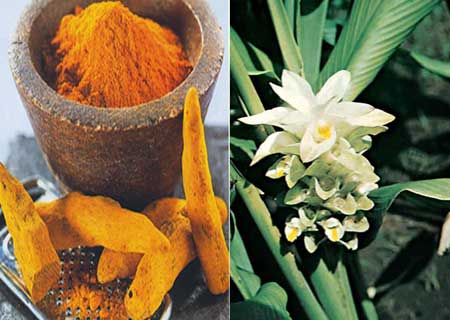Nature is a wonderful gift for mankind. Often, there are many natural substances in our homes that may have a great remedial power and unfortunately we do not know about them. Also there are some that are used as home remedies, yet their potentials are yet to be explored.
Turmeric is one such gift from nature. A spice predominantly used in curry preparations in the Indian sub-continent and as a home-remedy for inflammation, healing wounds and relieving pain, turmeric can also be used in the prevention of diabetes! Endocrinologists Dr. Drew Tortoriello, M.D., Ph.D. and Rudolph Leibel, M.D. and their colleagues at the Naomi Berrie Diabetes Center at Columbia University Medical Center have discovered that turmeric can play a mojor role in the prevention of Type 2 diabetes.
While researching the endocrinologists found that the mice that were treated with turmeric were less likely to develop the diabetes, after the blood glucose levels and glucose and insulin tolerance of these mice were tested.
It was also found that the obese mice that were fed with turmeric had reduced inflammation in the fat tissue and liver as compared to the controlled ones. Since the turmeric (Curcuma longa) has anti-inflammatory and anti-oxidant properties containing ingredient- Curcumin, it can very well be the deterrent to insulin resistance and inflammatory responses thereby preventing Type 2 diabetes. Type 2 diabetes is a result of a sedentary lifestyle and insulin abnormalities mostly common in obese people.
Curcumin is also known to have no side-effects or toxicities if the intake is exceeding the dose-limits. This was studied in the two distinct mouse models of obesity and Type 2 diabetes: high-fat-diet-fed male mice and leptin-deficient obese female mice. The lean mice of the wild variety were used as controls and were fed on the low-fat diets.
Curcumin (turmeric) has also been found to reduce considerable amount of body fat and weight even if there was a high level of calorie consumption thereby having a significant effect on the metabolism.
In the past, researchers from Naomi Berrie Diabetes Center have discovered that the ‘cytokine’ molecules cause inflammation in heart and islets of langerhans in the pancreas of obese people and also increase the insulin resistance in muscle and liver. The cytokine is produced by immune cells called as macrophages. Hence turmeric or drugs having the same effect can be used to suppress the activity of these cells and the negative effects of obesity, as per a hypothesis from the researchers.
“It’s too early to tell whether increasing dietary curcumin [through turmeric] intake in obese people with diabetes will show a similar benefit,†Dr. Tortoriello said. “Although the daily intake of curcumin one might have to consume as a primary diabetes treatment is likely impractical, it is entirely possible that lower dosages of curcumin could nicely complement our traditional therapies as a natural and safe treatment.’
Therefore the researchers conclude that the anti-oxidant curcumin and turmeric can act as a controller for blood sugar level and metabolism and inflammatory and metabolic problems in obesity and Type 2 diabetes.
The detailed research was presented at ENDO 2008, the Endocrine Society’s annual meeting in San Francisco this week will be published soon in Endocrinology, the paper.

